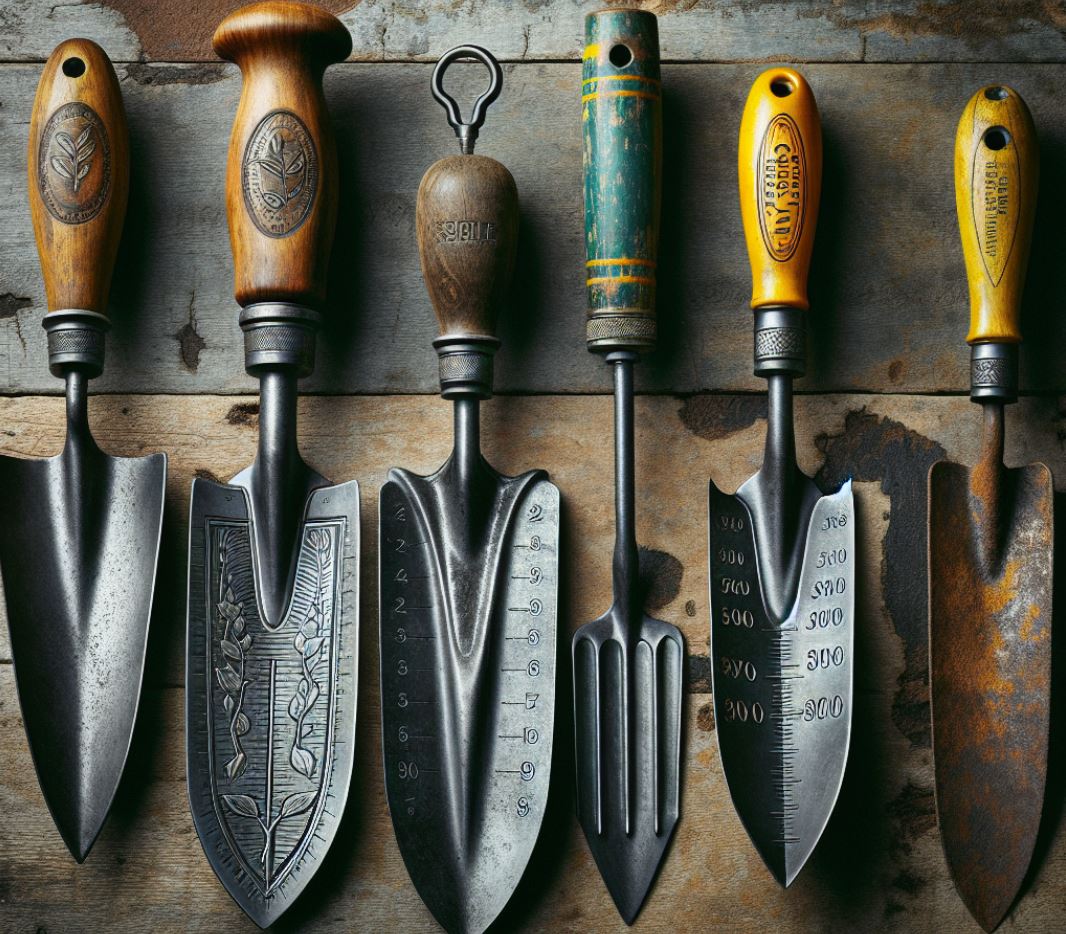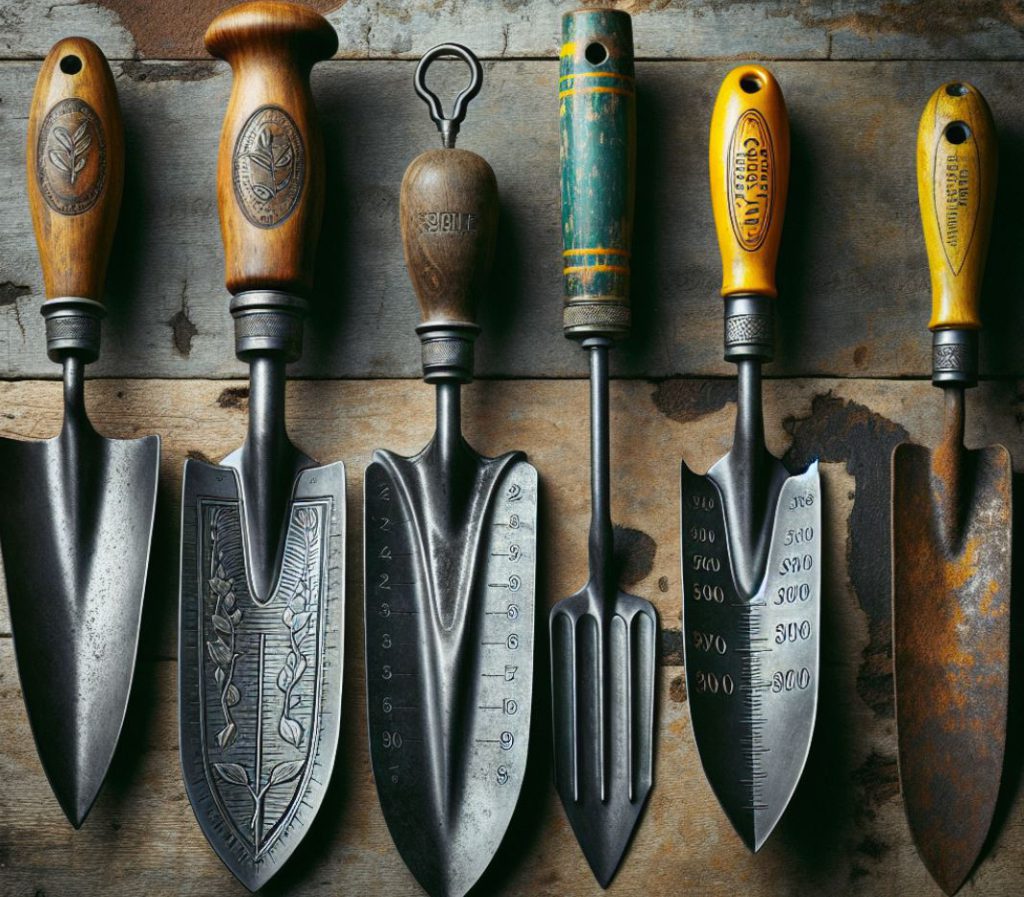Uncover the ultimate gardening companion with our in-depth review of the top 5 best garden trowels on the market.
Table of Contents
Introduction to Garden Trowels
We’re going on a little adventure to discover what a garden trowel is and why it’s a super tool for gardeners. Imagine having a mini shovel that helps you plant flowers and dig in the dirt; that’s what a garden trowel is!
When you’re out in the garden, a trowel is like having a trusty sidekick by your side. It’s the tool that helps you get your hands dirty and make your plants happy. Let’s dive in and learn more about these amazing little tools!
The Many Types of Trowels
Did you know there are different types of trowels for different jobs in the garden? We’ll explore the hand trowel, potting trowel, and digging trowel to see what makes each one special.
Hand Trowel
This is like a little helper for your hands. It’s perfect for moving soil and planting small plants.
Potting Trowel
If you love playing with pots and putting plants in them, the potting trowel is your friend. It’s designed to help with potting plants.
Digging Trowel
When you need to dig a hole or move a lot of dirt, the digging trowel comes to the rescue. It’s strong and can dig deep.
Choosing the Best Garden Trowel
Picking the best garden trowel is like choosing the best ice cream flavor; you want the one that’s just right for you. Let’s take a closer look at what makes a garden trowel the best tool for digging and planting.
Size and Shape
Some garden trowels are big, some are small, and they come in different shapes. The size and shape of a trowel can make a big difference in how easy it is to use. A smaller trowel might be better for planting in tight spaces, while a larger one could be more efficient for digging bigger holes. Think about what you’ll be using your trowel for most and choose a size and shape that fits your needs.
Material
Garden trowels can be made of metal or plastic. Metal trowels are usually stronger and more durable, making them a good choice for heavy-duty digging. Plastic trowels, on the other hand, are lighter and easier to handle for smaller gardening tasks. Consider the type of gardening you’ll be doing and choose a trowel material that will hold up to the job.
Using Your Trowel Safely
Just like superheroes need to use their powers safely, we need to use our gardening trowels safely too. Let’s learn how to dig and plant without getting hurt.
Proper Grip
When using your hand trowel or gardening trowel, it’s essential to hold it the right way. Make sure to grip the handle firmly but comfortably. This way, you can control the trowel easily without straining your hands. Remember, a good grip helps you work efficiently and prevents accidents.
Digging Techniques
There’s a special technique to digging with a trowel. Instead of using all your strength to push the trowel into the soil, try using a rocking motion. Place the trowel blade into the ground at a slight angle, then gently rock it back and forth to create a neat hole. This method is not only easier on your muscles but also helps you dig more precisely.
Caring for Your Trowel
After playing and working with your gardening trowel or hand shovel, it needs a little TLC. Taking care of your trowel will ensure it stays in great shape for all your gardening adventures. Let’s explore how to clean and store your trowel properly.
Cleaning Your Trowel
When you’re done using your trowel, it’s essential to give it a good cleaning. Dirt and moisture can build up on the metal or plastic, which might cause rust or damage over time. Here’s how you can keep your trowel clean:
1. Rinse off any dirt or soil from the trowel with water. You can use a hose or a bucket of water to wash away the grime.
2. If there are stubborn spots of dirt, you can use a brush or a cloth to scrub them off gently. Avoid using harsh chemicals that may damage the material of the trowel.
3. Once the trowel is clean, make sure to dry it thoroughly with a towel to prevent any moisture from lingering and causing rust.
Storing Your Trowel
Proper storage is just as important as cleaning your trowel. Storing it in the right place will help keep it safe and ready for your next gardening project. Here are some tips on storing your trowel:
1. Find a dry and sheltered spot to store your trowel. Moisture can lead to rust, so avoid leaving it out in the rain or damp conditions.
2. You can hang your trowel on a hook in your garden shed or garage to keep it off the ground and prevent it from getting lost in a pile of tools.
3. If you don’t have a hook, you can also store your trowel in a clean, dry bucket or container with your other gardening tools to keep them organized and easy to find.
By cleaning and storing your trowel properly, you’ll ensure that it stays in top condition for all your gardening needs. Remember, a well-cared-for trowel is a happy trowel!
Conclusion: The Trowel’s Tale
As we come to the end of our journey exploring the world of garden trowels, we can look back at all the amazing things we’ve discovered about this fantastic gardening tool. From the best garden trowel to the trusty hand trowel, we’ve learned how each type serves a unique purpose in making our gardening adventures more enjoyable and successful.
Just like a knight with a trusty sword or a wizard with a magical wand, a gardener armed with a trowel is ready to conquer any planting or digging task that comes their way. The best garden trowel becomes an extension of our hands, helping us nurture our plants and create beautiful gardens.
Remember, whether you’re using a hand trowel to plant delicate flowers, a potting trowel to repot your favorite plants, or a digging trowel to unearth treasures in the soil, each trowel has a story to tell. It’s a tale of growth, beauty, and the magic of nature that we can experience with our trusty garden companion.
FAQs
What’s the best way to clean my trowel?
We’ll answer questions on how to keep your trowel clean and looking like new.
Can I use a trowel for planting big plants?
Find out if your trowel can handle the big jobs or if it’s better for smaller tasks.
How do I know if my trowel is the right size for me?
We’ll talk about how to choose a trowel that’s not too big or too small, but just right for your hands.

